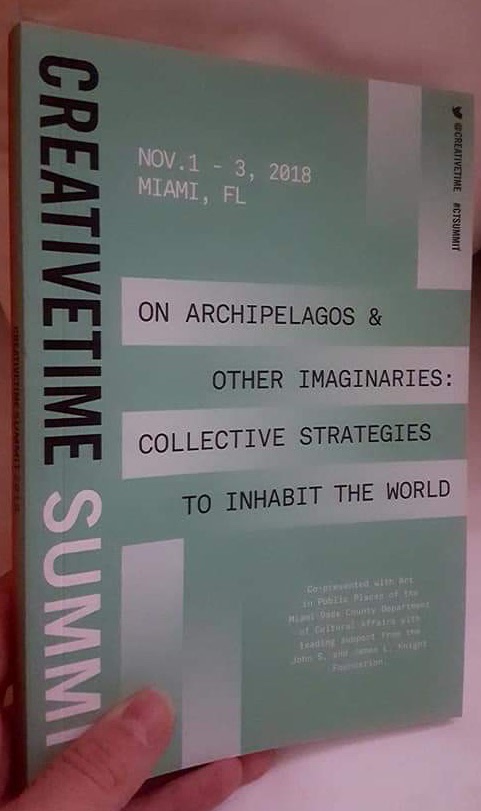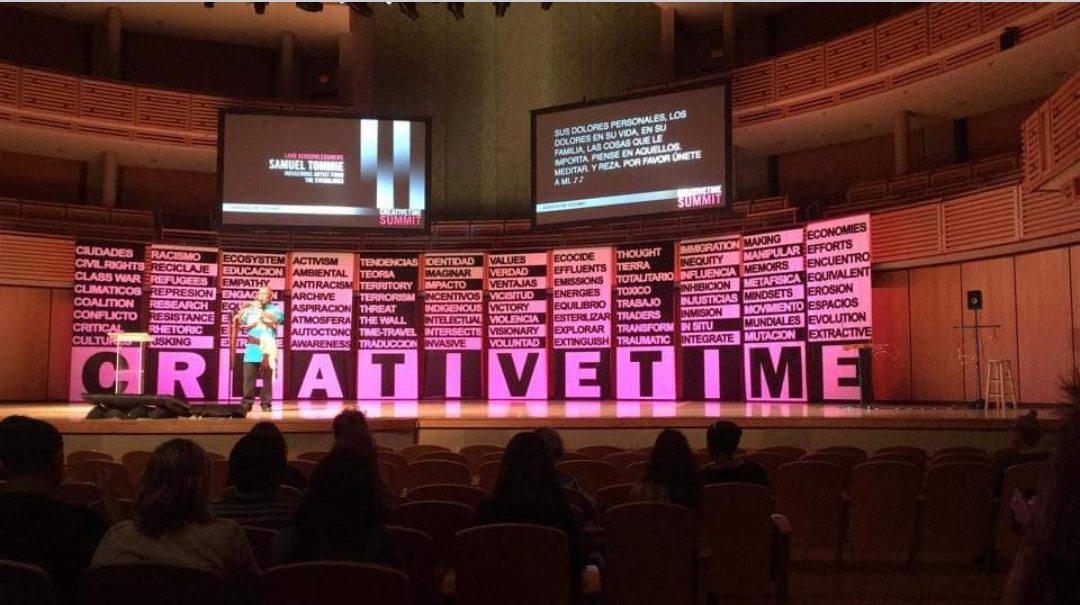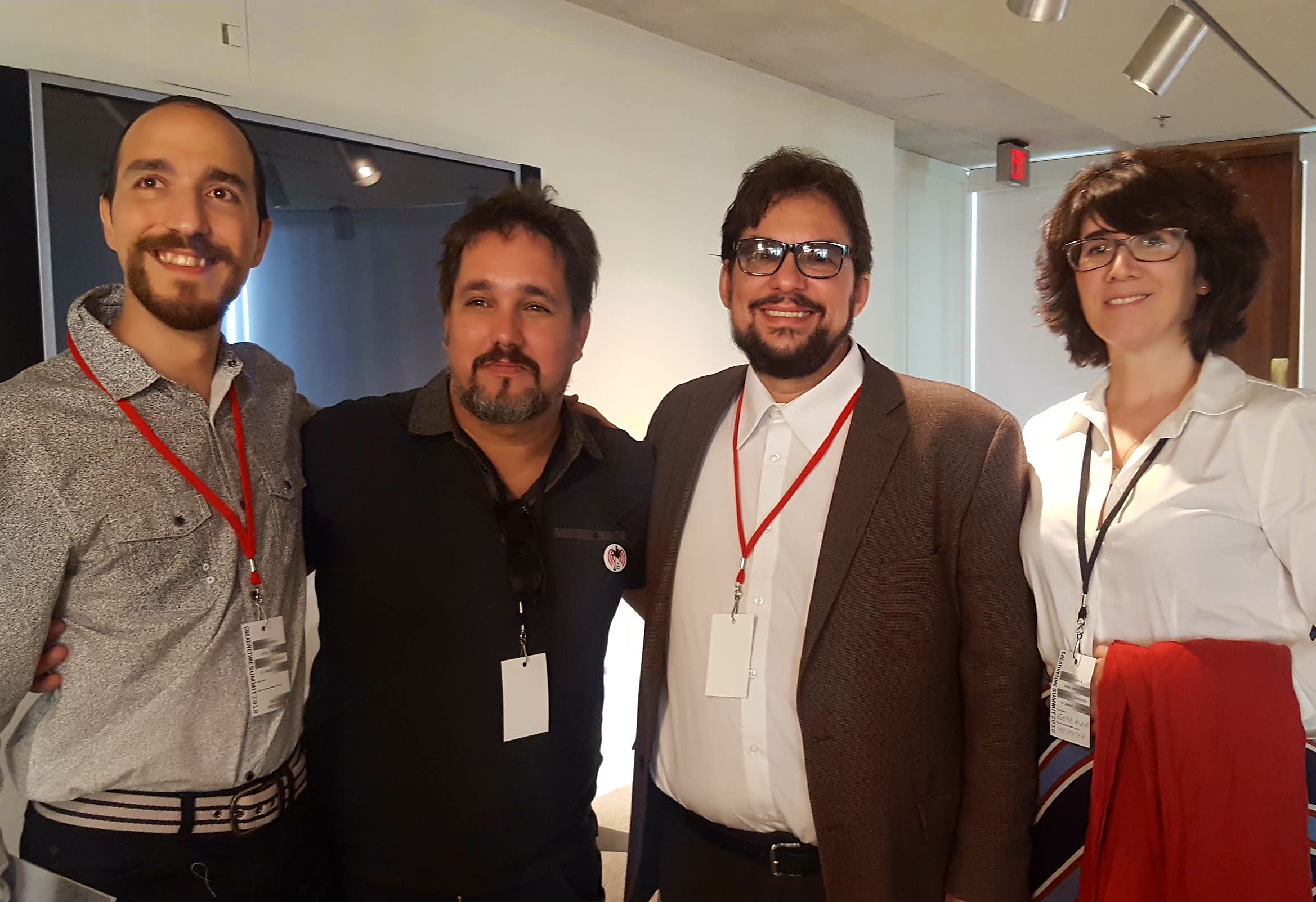PEREZ ART MUSEUM MIAMI (PAMM)
2018 CREATIVE TIME SUMMIT
Panel “Anxieties of Transparency” Led by Elvis Fuentes, Gema Álava, Yucef Merhi, Rodolfo Peraza
Summit dates: November 1-2-3. Panel: Saturday November 3 | 12PM-1PM
ENGLISH
Artist and WCPUN Cultural Adviser, Gema Álava ‘s work is exhibited and discussed at the Perez Art Museum Miami (PAMM) in the context of the 11th Creative Time Summit, entitled On Archipelagos and Other Imaginaries—Collective Strategies to Inhabit the World, which focused on the concept of “coalition” and utilized the archipelago as a framework to delve into Miami’s historical connection to the Caribbean and, by extension, to Latin America and the entire world. Gema Alava’s work was presented in dialogue with the work of artists Yucef Merhi and Rodolfo Peraza in a panel led by curator, Elvis Fuentes, about how the work of these three artists encourage conversation about the importance of transparency in times of digital communication.
Gema Álava has developed for two decades participatory art projects based on the premise that art and culture can be instruments for awareness and social transformation. Alava’s projects and publications will be exhibited and discussed at three important venues, which will deal with topics in the fields of museums, sustainability, surveillance, disability and survival of the artists.
Álava is interested in the way in which people respond differently to the same situation, and explores this concept in her artistic work, making sure to leave room for interpretation, writes Robert Walker, Professor of the Department of Social Policy and Intervention in the University of Oxford, and Director of the Social Policy Research Center of Loughborough University in his book “The Shame of Poverty, Oxford University Press.” And that’s indeed what will take place during this Fall: the interpretation and influence of an artist’s work at three crucial meeting points in three different cities.
http://creativetime.org/summit/miami-2018
The Summit is an annual convening for thinkers, dreamers, and doers working at the intersection of art and politics, and will be held in Miami for the first time this November 1-3, 2018. Titled On Archipelagos and Other Imaginaries—Collective Strategies to Inhabit the World, the Summit will be made up of four thematic sections: “Facing climate realities, reimagining a green future,” “Toward an intersectional justice,” “Resisting displacement and violence,” and “On boundaries and a borderless future.”
“Security cameras are like black holes that reflect our behavior, which will be erased later if the captured images do not detect a criminal act. But can be criminal a “gaze”? Cameras can absorb our vulnerability and invade our personal space. We need to be aware of the way in which we observe, and the way in which we have been taught to observe. We should not only question who are being observed but also who are not being observed? Why are we being watched or why are we not?” says Álava.
Art critic Jonathan Goodman writes: “Álava’s drawings respond to the constant presence of surveillance in the museums originating the work. Surveillance remains a profound threat to privacy, and is undertaken even in outdoor public spaces. In the museums, ostensibly they are meant to protect the art from being stolen or touched, but even there, the problem of implicit control occurs. Álava is suggesting that hidden scrutiny, even should it be necessary, has become endemic to our culture, undermining relations between people. That this would happen in the museum is at least strange, but it is also morally troubling. Impersonal observance of behavior is now profoundly embedded in our culture, but that doesn’t make it correct. It is both strange and unhappy that technological observation occurs in the museum, where one would hope for more open, and more trusting, relations between the institution and its audience.”
For further information on Álava’s work on “surveillance”, see articles (click on the link):
“ÚnicoTestigo: Las cámaras de seguridad” (A Single Witness: the Security Cameras), by Marta Torres, La Razón, 2017 (SPANISH)
“Observational Awareness” by Jonathan Goodman, ArteFuse, 2017 (ENGLISH)
SPANISH
Álava presentará su obra “Trust Me” y “Reflex” en el contexto de un panel dirigido por el curador Elvis Fuentes, titulado: “La ansiedad de transparencia”.
“Las cámaras son como agujeros negros que reflejan nuestro comportamiento, que se borrará después si las imágenes captadas no detectan un acto criminal. Pero, ¿puede ser criminal la mirada? Las cámaras pueden absorber nuestra vulnerabilidad e invadir nuestro espacio personal. Necesitamos ser conscientes del modo en el que observamos, y del modo en el que nos han enseñado, formado para observar. No sólo a quién se está observando, sino también a quién no se está observando. ¿Por qué nos observan? ¿O por qué no lo hacen?” dice Álava.
El crítico de arte Jonathan Goodman escribe al respecto: “Los dibujos de Álava responden a la presencia constante de la vigilancia en los museos. La vigilancia sigue siendo una profunda amenaza para la privacidad, y se realiza incluso en espacios públicos al aire libre. Es en los museos, aparentemente destinados a proteger el arte de ser robado o tocado, donde surge el problema del control implícito. Álava está sugiriendo que el escrutinio oculto, incluso si fuera necesario, se ha convertido en tema endémico de nuestra cultura, socavando las relaciones entre las personas. El hecho de que esto ocurra también en el interior de un museo es extraño y moralmente preocupante. La observación impersonal del comportamiento está profundamente arraigada en nuestra cultura, pero eso no lo convierte en un hecho correcto. Es extraño y triste que la observación tecnológica ocurra en el interior de un museo, donde uno “esperaría relaciones más abiertas entre la institución y su audiencia”.





